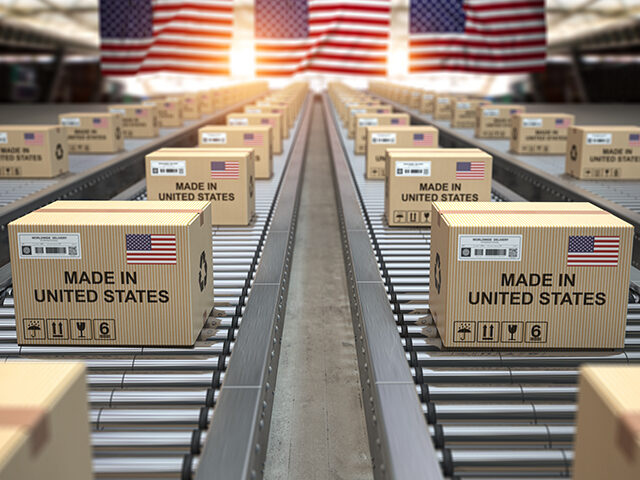ISM Points to a Bottoming Manufacturing Sector
The U.S. manufacturing sector’s worst days appear to be behind it.
Manufacturing activity appears to have contracted again in September but at the slowest pace of the recent cycle. The Institute for Supply Management (ISM) said its purchasing managers’ index (PMI) recorded an eleventh month of contraction. But the ISM index rose to 49, just below the above 50 threshold that signals expansion and higher than Wall Street forecast. This is the third straight month in which the ISM index improved.
That’s high enough to indicate that the overall economy is very likely expanding, at least according to the ISM. Officially, the economy has been expanding all year, but the ISM manufacturing PMI has been one of many indicators—including the Conference Board’s consumer sentiment gauge, the Leading Economic Index, and the yield curve—that have been signaling that a recession is nearing.
Now that the manufacturing PMI has jumped above 48.7, it is indicating an expansion for the overall economy. This is the first time in nine months that the PMI has crossed above this threshold.
“The U.S. manufacturing sector continued its contraction trend but at a slower rate, recording its best performance since November 2022, when the PMI also registered 49 percent. Companies are still managing outputs appropriately as order softness continues, but the month-over-month PMI improvement in September is a clear positive,” said ISM’s Timothy Fiore.
The measure of new orders remained in contraction territory at 49.2 percent. But that’s a 2.4 percentage point improvement from the 46.8 percent recorded in August. The production index reading jumped 2.5 percentage points to 52.5 percent. The measure of employment climbed 2.7 percentage points to 51.2 percent.
This supports the argument that the manufacturing sector has bottomed, setting the stage for a possible recovery later this year.
S&P Global’s Survey Shows “Near-Stabilization” in Manufacturing
The competing purchasing managers’ survey from S&P Global is also consistent with the view that the sector’s contraction is coming to an end.
The seasonally adjusted S&P Global U.S. Manufacturing Purchasing Managers’ Index registered 49.8 in September, up from 47.9 in August and higher than the earlier released “flash” estimate of 48.9. Wall Street had been expecting the end-of-month reading to equal the flash estimate.
Output growth resumed in September, according to the S&P Global measure.
“Production increased at a marginal pace that was nonetheless the fastest since May. Firms often attributed the upturn to greater workforce numbers as companies sought to broaden capacity. Some manufacturers, however, noted that less downbeat demand conditions had helped to support the expansion in output,” S&P Global reported.
What’s more, manufacturers are increasingly upbeat about the future.
“Manufacturers’ expectations of future output have jumped to their highest for nearly one and a half years, supply conditions continue to improve, and the rate of order book decline has moderated considerably in recent months, in part due to fewer producers and customers reporting deliberate cost-focused inventory reduction policies,” Chris Williamson of S&P Global said.
Inflation Is Still a Threat
Producers’ costs rose at the fastest rate in five months, according to Williamson, who attributes this mostly to higher oil prices.
“These increased costs are already feeding through to higher prices to customers, which will inevitably result in some renewed upward pressure on inflation,” Williamson said.
On the other hand, the ISM gauges of costs went in the other direction. Its prices index showed prices decreasing, with the prices index falling 4.6 percentage points. Yet even ISM noted that “energy costs in August and September could possibly affect future material costs.”

Gas prices are seen at a Mobil gas station in Los Angeles on September 28, 2023. California gas prices are nearing $7 per gallon in some locations as oil prices surge toward $100 a barrel. (ROBYN BECK/AFP via Getty Images)
Notably, the two major economic segments that registered growth in September in the ISM survey are both big contributors to headline inflation but not core. Those are “Food, Beverage & Tobacco Products” and “Petroleum & Coal Products.”
Bloomberg Economics Team Sees a Possible Recession This Year
Every now and then, we like to bring to the attention of our readers points of view that differ from our own. While we do not expect a recession this year—in large part because consumer spending is still strong, housing is recovering, and manufacturing appears to be on the verge of a rebound—not everyone is as sanguine.
The team at Bloomberg Economics, for instance, thinks there’s a better-than-even chance that we’ll officially enter in a recession this year:
Bloomberg Economics took a closer look at measures that are especially important for the eminent academics who’ll officially declare whether the US is in recession or not.
That determination, by the National Bureau of Economic Research, typically isn’t made until several months after the recession actually began. But the NBER’s slump-dating committee identifies six indicators that weigh heavily in the decision, including measures of income, employment, consumer spending and factory output.
Using consensus forecasts for those key numbers, Bloomberg Economics built a model to mimic the committee’s decision-making process in real time. It works fairly well to match past calls. What it says about the future: There’s a better-than-even chance that sometime next year, the NBER will declare that a US recession began in the closing months of 2023.
We suspect those consensus forecasts remain way too pessimistic. Certainly, forecasts were too gloomy coming into this year, and economists tend to be slow to revise their core views, preferring instead to simply delay the outcomes they saw coming rather than admit the outcome is now likely to be different.

COMMENTS
Please let us know if you're having issues with commenting.